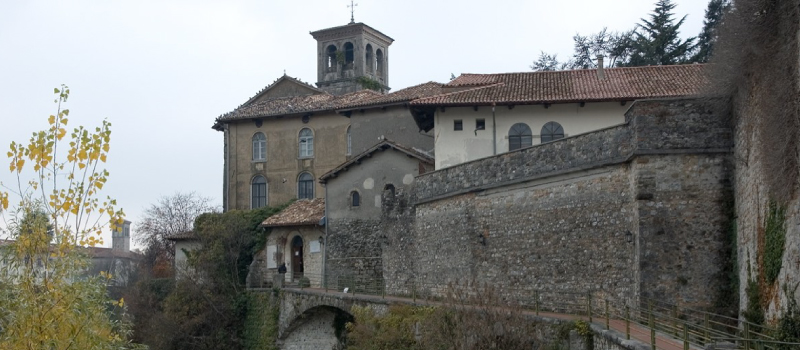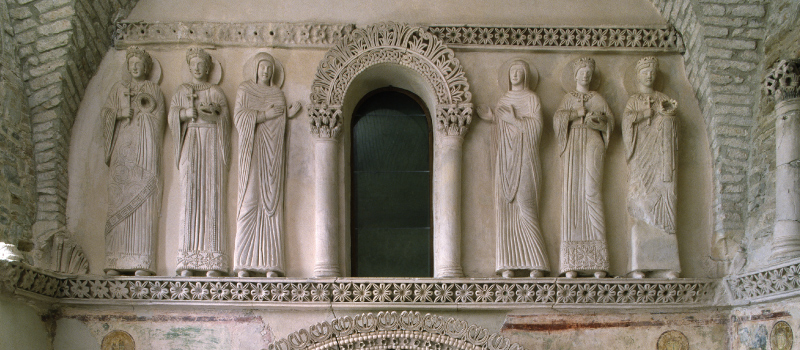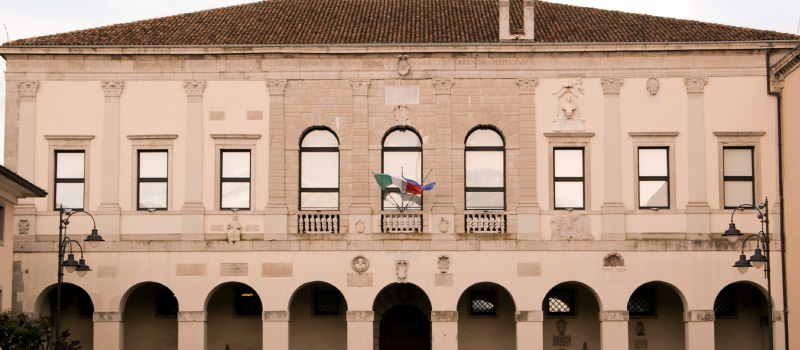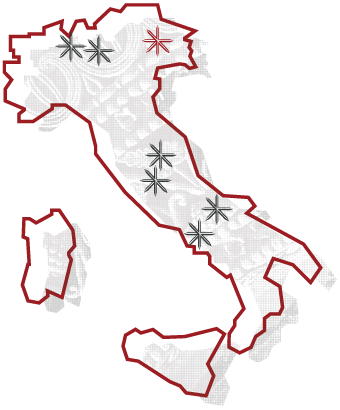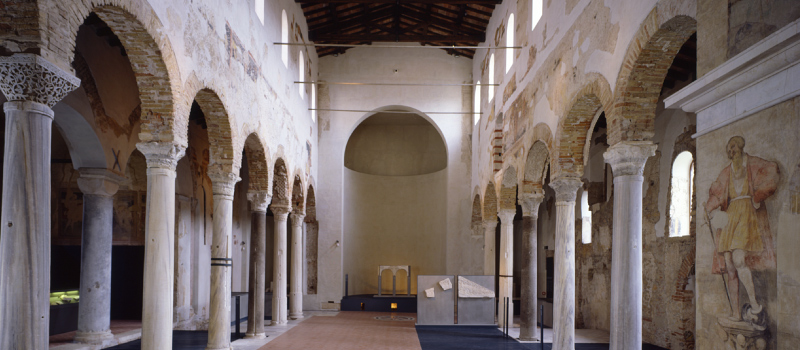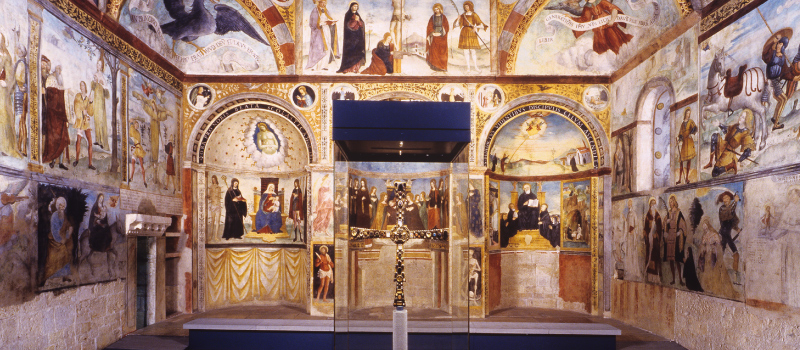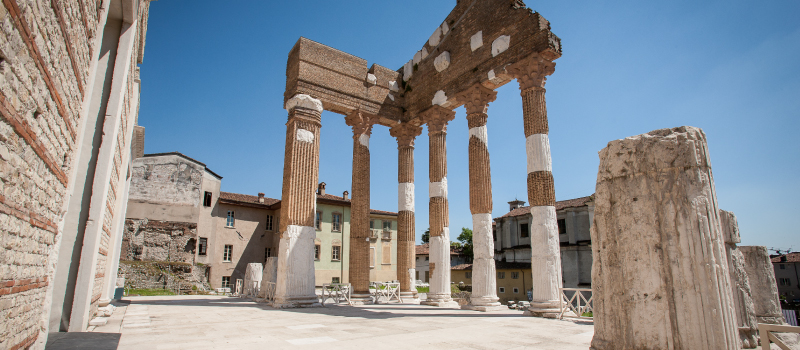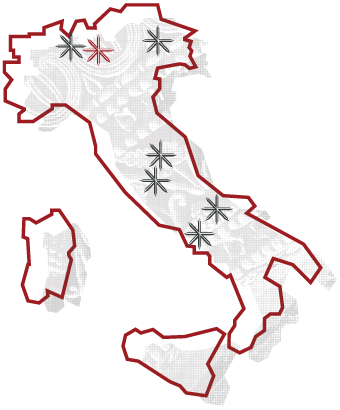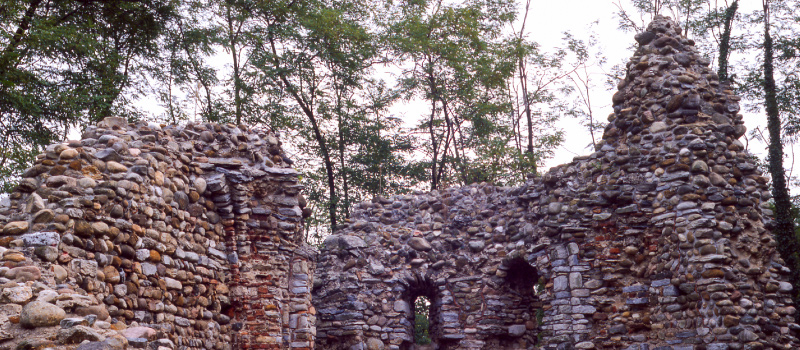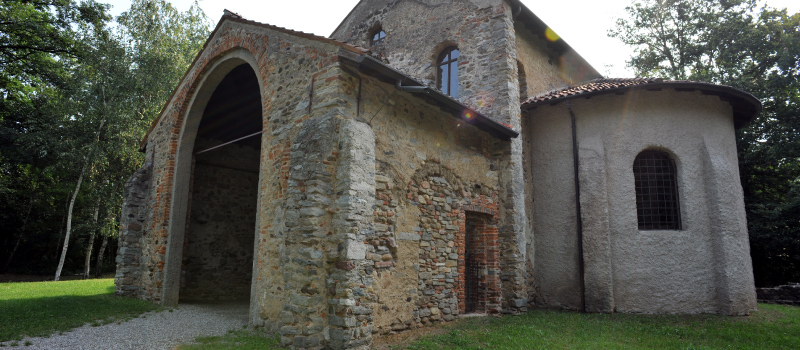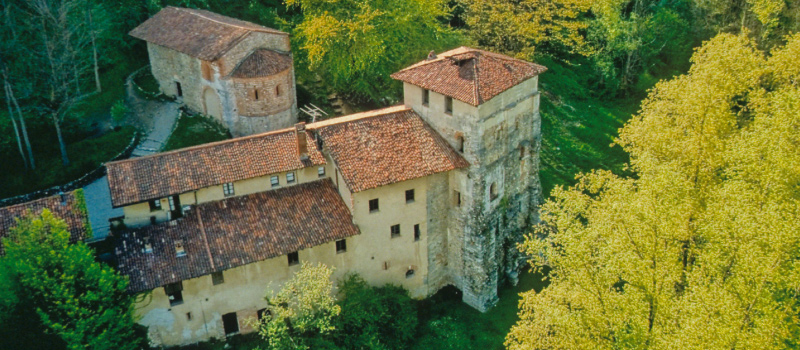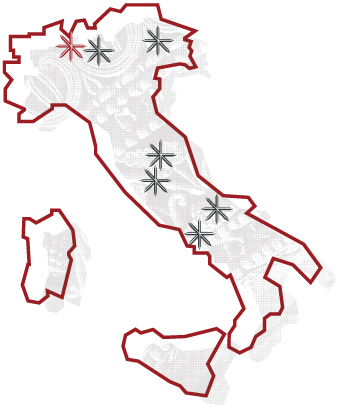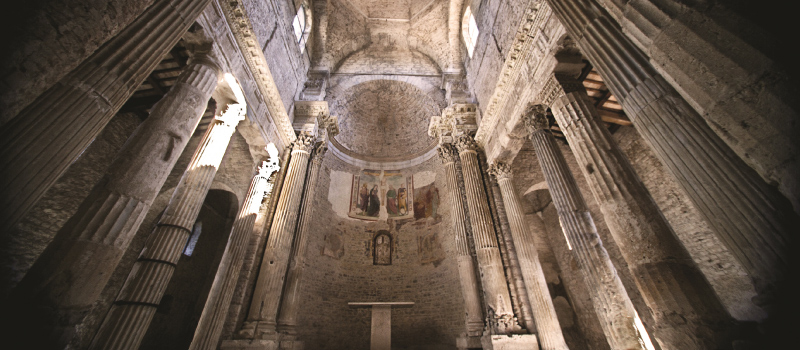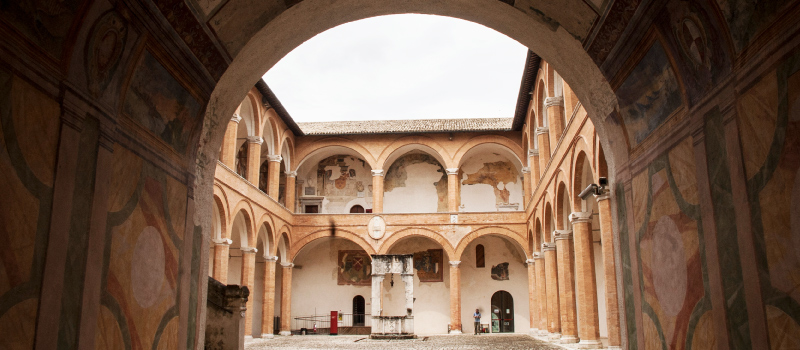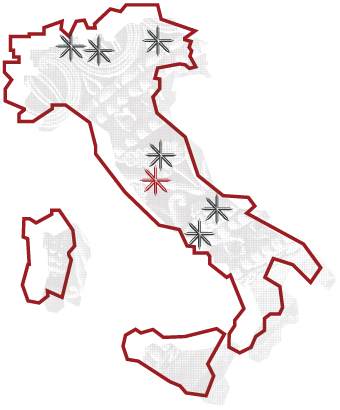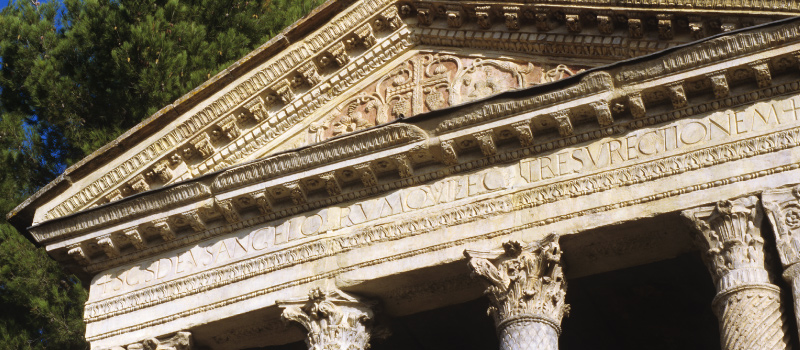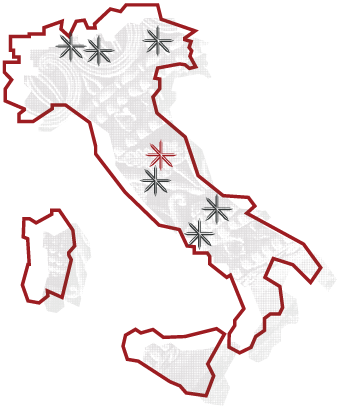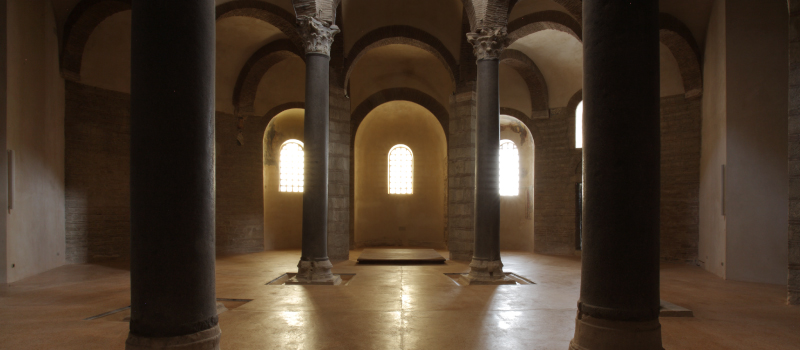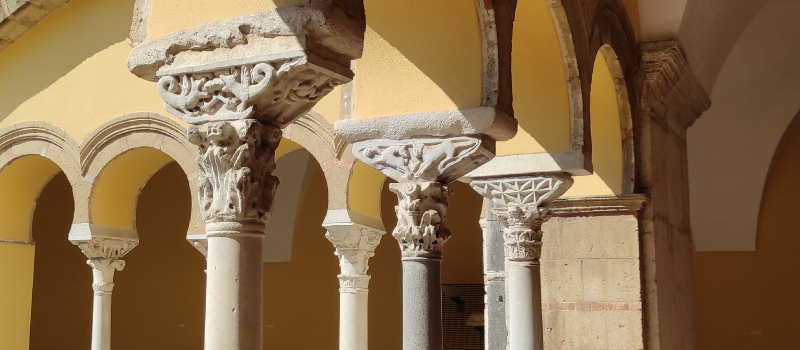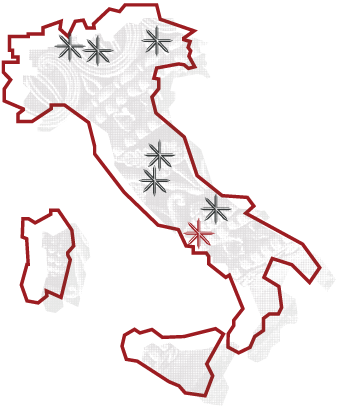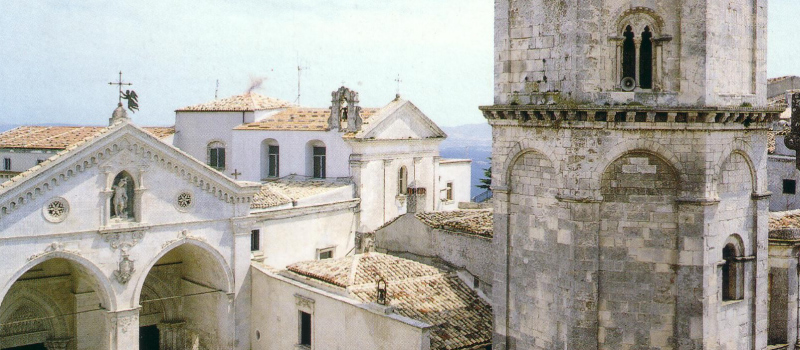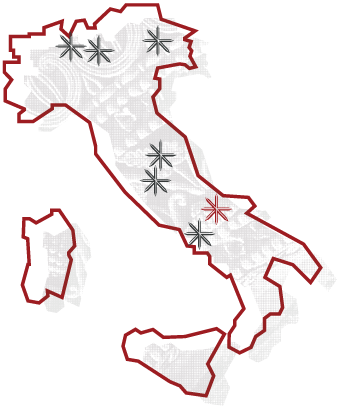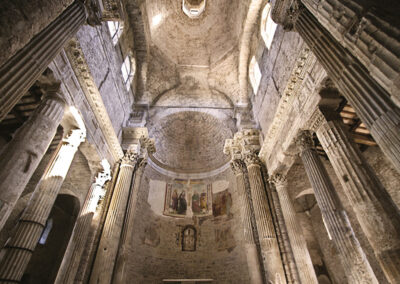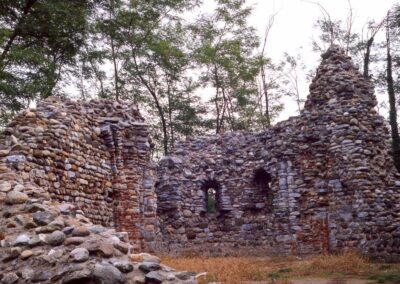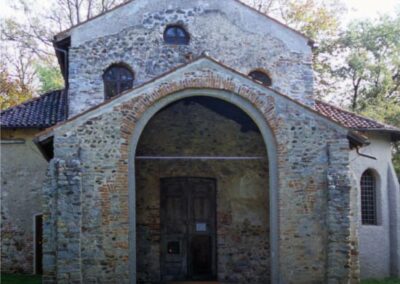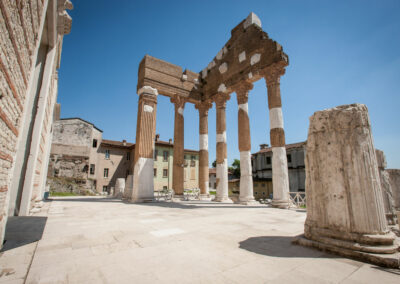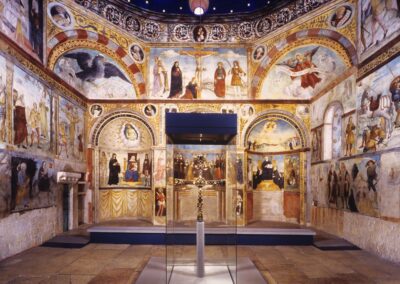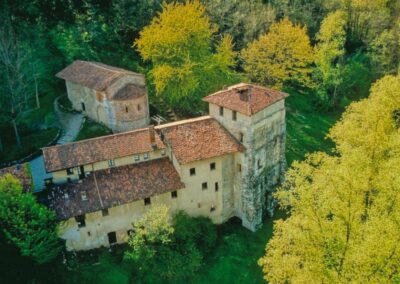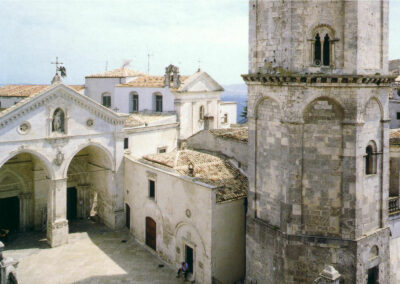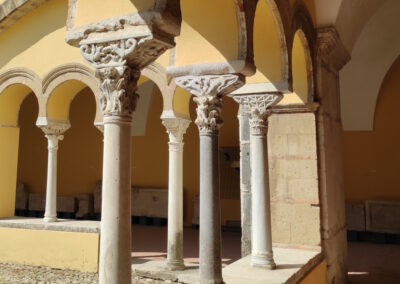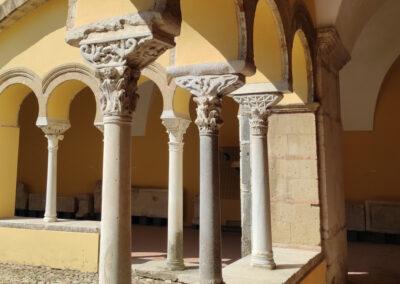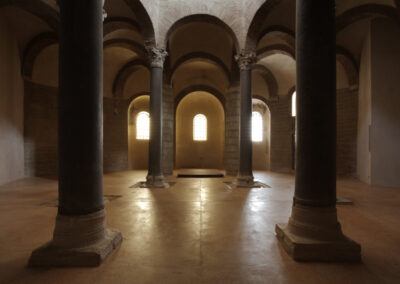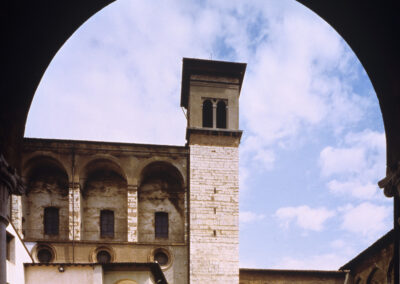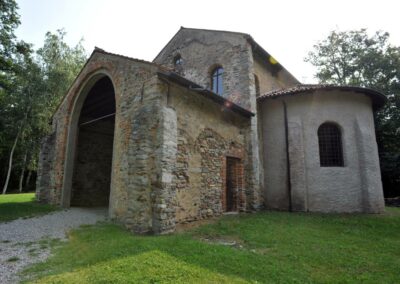The Warrior Ideal
The Warrior Ideal in the museums of Rome and Brescia
The first image that comes to mind when we talk about the Lombard people is of weapons – and a warrior wearing or wielding them.
The Lombard warrior is a powerful emblem in our collective perception of the Early Middle Ages, partly because of the importance such figures had within their social group, and also because much of our knowledge about the Lombards is based on the excavation of burial grounds, which clearly demonstrate that the society of the time wished to present most of its male members as warriors.
Most of the finds on display in both the Museo di Santa Giulia in Brescia and the Museo dell’Alto Medioevo in Roma come from cemeteries.
Santa Giulia features burial grounds found in the last quarter of the 19th century (Milzanello di Leno, Darfo, Botticino Sera, Calvisano, Brescia), and others dug more recently – of great interest for the abundant information they furnish.
The Museo Nazionale dell’Alto Medioevo in Roma houses the remarkable finds from the Nocera Umbra (PG) and Castel Trosino (AP) graveyards. In these excavations – conducted in 1897–1898 in Nocera Umbra (“Portone” cemetery) by Angiolo Pasqui, and from 1893 to 1896 in Castel Trosino (“Santo Stefano” cemetery) by Raniero Mengarelli – the positions of the grave goods in the tombs were recorded with great accuracy, thus furnishing important data for research.
The purpose of the exchange is to present a Lombard warrior ideal more closely tied to the Germanic model (the Brescian warrior), and another warrior ideal that is again basically Germanic, but has been influenced by Byzantine-Roman features (the Castel Trosino warrior).
Date: 29/01/2019 – 14/07/2019
Region: Lombardia e Lazio
Town: Brescia e Roma
Subject: The warriors
The “Lombards in the Limelight” project was organized to make known to a wider public the museums of the seven towns in the serial site (Cividale del Friuli, Brescia, Castelseprio-Torba, Spoleto, Campello sul Clitunno, Benevento, Monte Sant’Angelo), in collaboration with one another and several national museums with Lombard/Early Medieval sections.
This encounter involves 7 exhibition themes, which are divided between the 13 museums listed below.
Museo di Santa Giulia di Brescia
The Brescia town museum features an outstanding collection housed in a monastery founded by the Lombards; the interplay between ancient structural remains and the objects on display offers visitors a journey through Brescia’s history, art and religion from prehistory to the present.
Museo delle Civiltà – Museo dell’Alto Medioevo di Roma
The Museo dell’Alto Medioevo was founded to equip Rome with an Early Medieval archaeology museum that recounts the important passage from the Roman world to Late Antiquity. The display includes finds dating from the 4th to 14th centuries, mostly from Rome and central Italy.
The boy stands still in front of the set of weapons. Tomorrow for the first time his father, a fearsome Lombard horseman, will allow his son to join him, to begin his training as a squire. One day he will be able to become one of the warriors who are the mainstay of the community, the backbone of the kingdom. And now for the first time – his mouth wide open and his eyes full of admiration and fear – he can touch the array of weaponry that his father carries in battle. His gaze runs over the shiny lamellar armour, which fits the knight like a sweater, and allows him to move with great agility in battle. He touches the metal-covered glove that allows you to strike enemies with a protected hand, lowering the sword like divine punishment. The child knows, because he has heard the old men of the family say so, that once the Lombards did not wear this armour; then they saw it worn by their Byzantine enemies. He sighs. Sometimes everything seems mixed up. Where he lives near Rome, Lombards and Italics now live side-by-side and even the Byzantines are not real enemies. He knows that once, when his ancestors came from the North with their king Alboin, spreading across the plain from Cividale to Brescia and beyond, the tall, sturdy Lombard warriors had different weapons: massive shields to ward off blows, long spathae, less slender and finely made than his father’s, an iron skewer useful for mounted combat and a scramasax, a knife with a single cutting edge. They were a rough warrior people, always ready for a fight. Over time the Lombards had learnt to appreciate certain refinements, thought the child, admiring the flashing spurs in silver and brass – and especially the belt buckle and endpiece finely decorated with the image of a warrior with a shield, surrounded by bushes and flowers. His father bought it in a Byzantine workshop; he didn’t know the meaning of those interlocked signs like an arcane monogram, a protection spell. The boy smiles. His father can’t understand it, but he grew up next to a family of Byzantine origin and recognizes the letters; he can guess their meaning. And he is ready to become a new man in a new world full of exciting possibilities. A world in which everything is mixed up – just as he likes it.
Mariangela Galatea Vaglio

